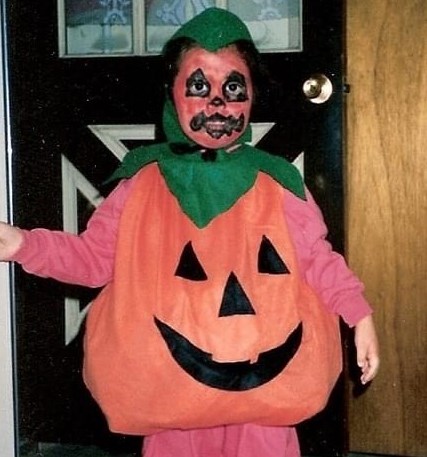Jeff Monague, a former Beausoleil First Nation chief and current park manager of Springwater Provincial Park, where he helps educate students about First Nations life, talks about the parallels of his people's cultures to Halloween.
*****
I remember as kid, over hearing one of my uncles tell my father, “A Makwa Mwase (Bear Walker) was seen in the community last night.”
He and my father had just sat down together for a coffee.
I decided to stay within earshot because this was sure to be one of those great stories they would often tell one another. I wasn’t disappointed.
For the uninitiated, a Makwa Mwase, pronounced as Muh-Kwha Mwha-seh, (Bear Walker) was a shape shifter, a person who had learned to use the sacred medicines for evil purposes. The Makwa Mwase was feared, and most often, no one knew who that person was because they could use their powers to elude others.
My uncle told my father that one of his neighbours had encountered a small bear the previous night as he returned home. The bear had shiny red eyes and the lips and tongue seemed to glow in the moonlight.
When the bear stood up and walked toward the man, the neighbour stood frozen with fear.
He managed to shake himself free of his gripping fear and ran to grab a piece of cut firewood from his woodpile and turned once more to face the bear. When the bear approached again, the man struck the bear with the piece of wood and, using it as a weapon, he continued to strike the animal repeatedly.
The bear seemed to scream like a person rather than growl, and it was actively begging him to stop the hitting. Confused, my uncle’s neighbour stepped back for a second to reassess what he was experiencing and at that moment the red-eyed, glowing lipped bear, took the opportunity to run for the forest. The neighbour did not pursue it.
Then, that morning, after surveying the area where the encounter occurred, the neighbour could not find bear tracks anywhere. He ran quickly to my uncle’s house and told him the story.
“So we have to wait and see if anyone in the community has any injuries like bruises or broken ribs,” my uncle told my father.
Over the years, I have heard many stories like this and they were always told in a matter-of-fact way without anyone ever being doubted or ridiculed for their beliefs. Such is the world of the Anishinaabek, (Ojibwe).
It’s really no wonder that Halloween came to be so readily accepted into the Anishinaabek communities. The concept of Halloween has a huge presence and I tie that acceptance to the stories of the Makwa Mwase and the fact that at this time of year, when the leaves begin to fall, we would traditionally hold ceremonies and feasts to honour the spirits of our ancestors.
The ceremonies, known as the Feast of The Dead, have made a resurgence and I have participated in these ceremonies many times. They are held with great honour and respect for those who came before us.
Halloween is in a way, an extension of those two things. Through Halloween, we can have fun with the concept of evil, spirits, and shape shifting (costumes), in an innocent way.
It’s one non-Indigenous celebration we have embraced so readily that it could be mistaken as always having been a part of the Anishinaabek since, well, forever.
So, on this moonlit night, as I relay my stories to my next generation, I will let them know that in a sense, Halloween has always been ours.
